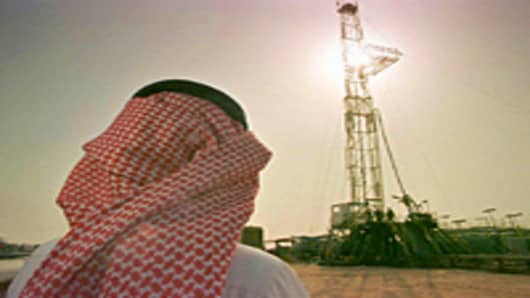Saudi Arabia is the largest economy in the Middle East, comprising 25 percent of the Arab world's gross domestic product. It is also the world's leading oil exporter so it’s no surprise that all eyes are on the Kingdom as the Arab Spring plays out.
But as investors prepare for the second half of the year they are trying to gauge what to expect in the Middle East. Many analysts in the region are bullish on Saudi Arabia, compared to other markets in the region, and recent data support that view.
In terms of the Saudi economy the Markit / HSBC PMI data points to healthy growth in the Kingdom. April PMI came in at 62.7, indicating strong expansion.
April inflation, a great concern for frontier and emerging markets at the moment, rose in Saudi to 4.8 percent; higher food prices driving that rise. The Kingdom’s $130 billion social spending package has yet to impact the inflation figure, but it is expected to have an impact in the second half of the year.
“The recent strengthening of the dollar and falls in commodity prices should have a dampening impact on inflation if they are sustained. We therefore maintain our forecast for average inflation of 5.5 percent this year,” Paul Gamble, Head of Research at Jadwa Investment, wrote in a research note.
Non-oil exports in Saudi Arabia hit an all-time high in March of $3.7 billion, with exports of petrochemicals and plastics posting new highs.
Gamble notes that higher oil prices are impacting demand and said “the impact on growth is most evident in the US, where consumers are more exposed to international price trends than those in countries with controlled retail prices or high fuel taxation. Barring any dramatic deterioration in regional political conditions, we think that oil prices are probably past their highs for the year.”
In terms of equities, the Saudi stock market, the Tadawul, has been trading in a tight range over the past 30 days. The index has not sustained declines as seen in most global markets as a result of renewed concerns about Eurozone debt.
Gamble said “the Saudi market is benefitting from the huge government spending contained in the recent Royal decrees, both through the improved outlook for many companies and the injection of funds stemming from the bonus for public sector workers.”
Foreign investor net inflows into the stock market through the swap agreement reached their highest level in April since October of 2010 coming in at 517 million Saudi Riyals ($137.8 million).
Gamble said “the inflows in recent months show that foreign investors do not think that the unrest elsewhere in the region is detracting too greatly from the attractiveness of the listed companies in the Kingdom.”


